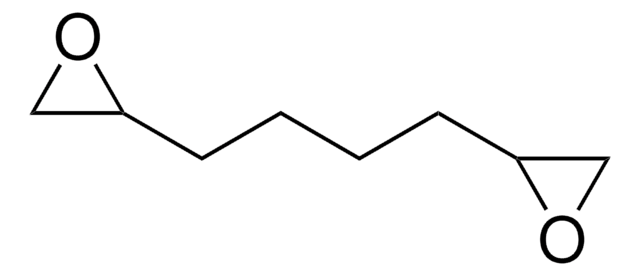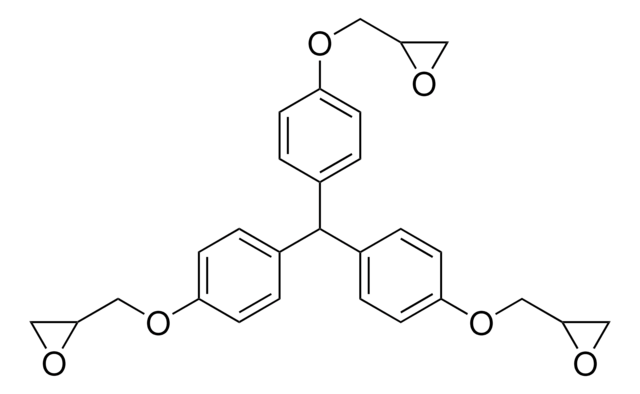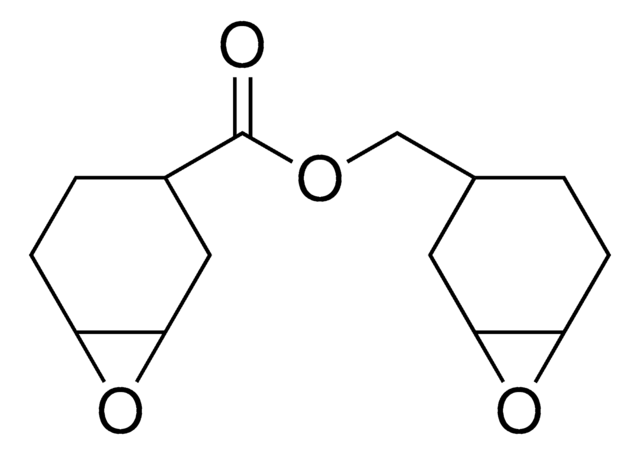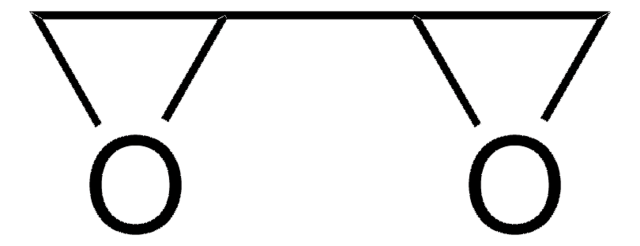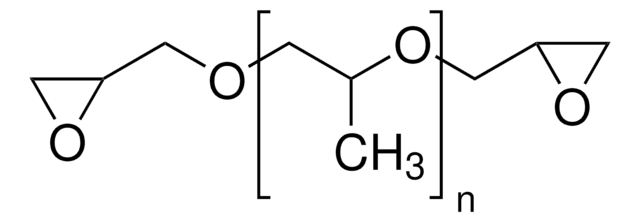Kluczowe dokumenty
124192
1,4-Butanediol diglycidyl ether
technical grade, 60%
Synonim(y):
1,4-Bis(2,3-epoxypropoxy)butane, 1,4-Bis(glycidyloxy)butane, 1,4-Bis(oxiran-2-ylmethoxy)butane, 1,4-Butylene glycol diglycidyl ether, Tetramethylene glycol diglycidyl ether
About This Item
Polecane produkty
klasa czystości
technical grade
Poziom jakości
ciśnienie pary
~10 mmHg ( 20 °C)
Formularz
liquid
stężenie
60%
współczynnik refrakcji
n20/D 1.453 (lit.)
bp
266 °C (lit.)
gęstość
1.1 g/mL at 25 °C (lit.)
ciąg SMILES
C(CCOCC1CO1)COCC2CO2
InChI
1S/C10H18O4/c1(3-11-5-9-7-13-9)2-4-12-6-10-8-14-10/h9-10H,1-8H2
Klucz InChI
SHKUUQIDMUMQQK-UHFFFAOYSA-N
Szukasz podobnych produktów? Odwiedź Przewodnik dotyczący porównywania produktów
Opis ogólny
Zastosowanie
- As a cross-linking agent to prepare hyaluronic acid dermal fillers This crosslinking process enhances the gel-like consistency of the filler, making it more durable and longer-lasting.
- As a monomer to prepare epoxy-based graphene nanocomposites that have potential applications in the field of flexible electronics, corrosion resistance coatings, and conductive adhesives. BDDE is chosen for its desirable properties such as low viscosity, good reactivity, and compatibility with graphene.
Hasło ostrzegawcze
Danger
Zwroty wskazujące rodzaj zagrożenia
Zwroty wskazujące środki ostrożności
Klasyfikacja zagrożeń
Acute Tox. 4 Dermal - Acute Tox. 4 Inhalation - Acute Tox. 4 Oral - Aquatic Chronic 3 - Eye Dam. 1 - Skin Irrit. 2 - Skin Sens. 1
Kod klasy składowania
10 - Combustible liquids
Klasa zagrożenia wodnego (WGK)
WGK 2
Temperatura zapłonu (°F)
235.4 °F - closed cup
Temperatura zapłonu (°C)
113 °C - closed cup
Środki ochrony indywidualnej
Eyeshields, Faceshields, Gloves, type ABEK (EN14387) respirator filter
Wybierz jedną z najnowszych wersji:
Masz już ten produkt?
Dokumenty związane z niedawno zakupionymi produktami zostały zamieszczone w Bibliotece dokumentów.
Nasz zespół naukowców ma doświadczenie we wszystkich obszarach badań, w tym w naukach przyrodniczych, materiałoznawstwie, syntezie chemicznej, chromatografii, analityce i wielu innych dziedzinach.
Skontaktuj się z zespołem ds. pomocy technicznej



